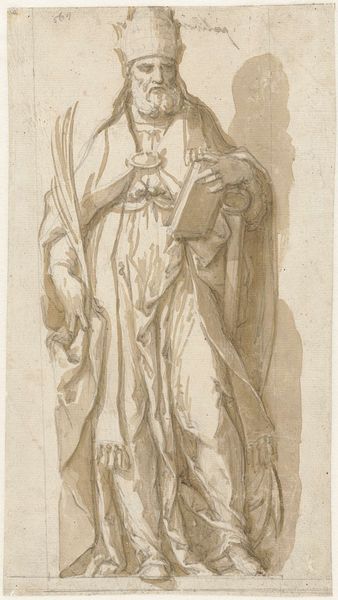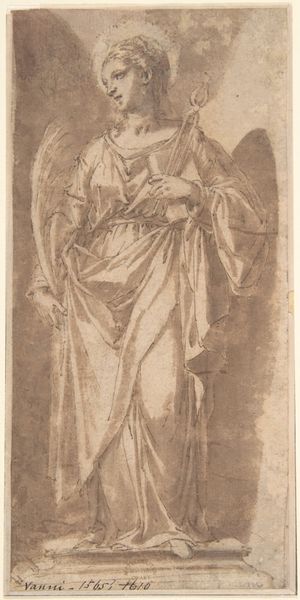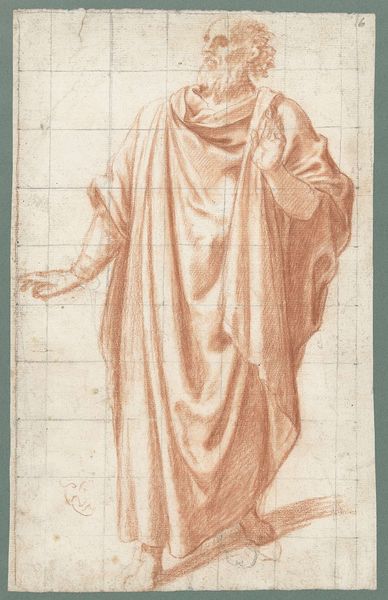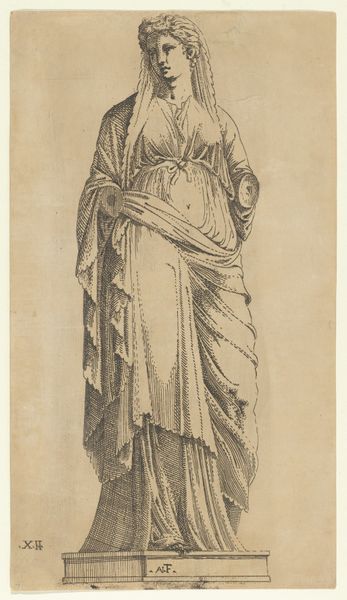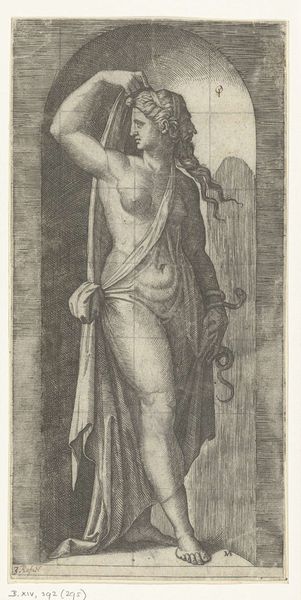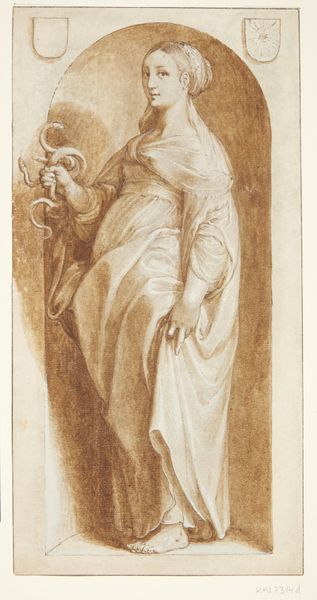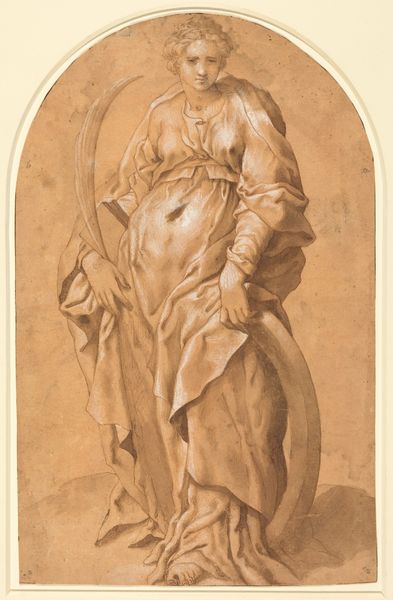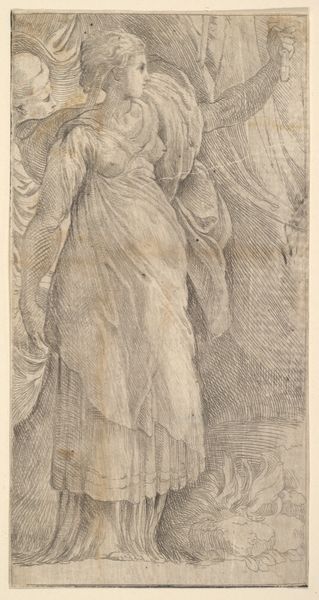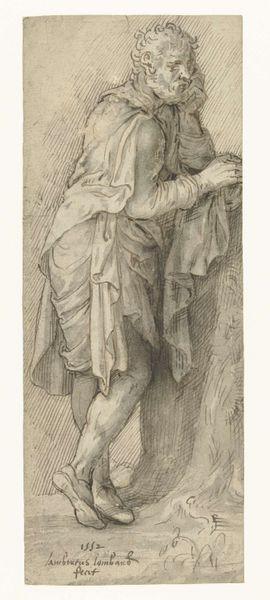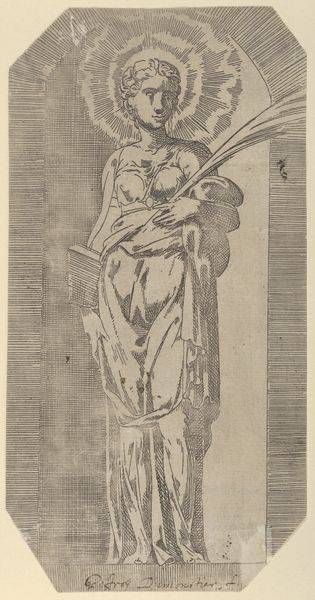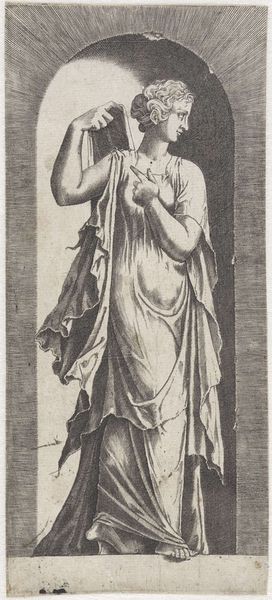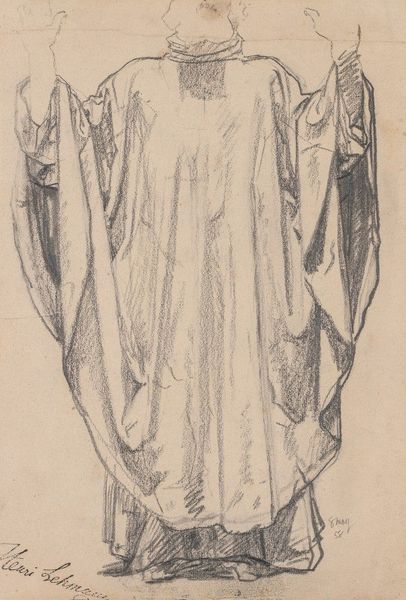
drawing, pen
#
portrait
#
pencil drawn
#
drawing
#
baroque
#
charcoal drawing
#
figuration
#
pencil drawing
#
pen
#
portrait drawing
#
history-painting
#
academic-art
Dimensions: height 281 mm, width 160 mm
Copyright: Rijks Museum: Open Domain
Curator: This is Nicolas Poussin's drawing, "Flora Farnese, van voren gezien," dating back to sometime between 1604 and 1665. Editor: Immediately striking! The draping of the fabric, the lines indicating depth and shadow—it evokes a very solemn, almost melancholic mood. Curator: Poussin, situated firmly in the Baroque style, often drew inspiration from classical antiquity. The figure, a study of the sculpture, Flora Farnese, reflects that deep engagement with historical themes. Looking at how she carries the garland, we must understand what Poussin is trying to say about female virtue. Editor: It's interesting to note Poussin’s medium choices. Pen and pencil on paper is interesting when so much other work was being created using oils. What were his artistic practices during the creation of this piece? How did he understand materiality and process as a means of engaging with classical sculptures? Curator: That is insightful. Understanding Poussin's artistic intentions often means looking at how these drawings reflect a certain understanding of gender within history painting, considering that female allegorical figures were prevalent within powerful family portraiture to represent fecundity. Editor: Absolutely, this work gives insight into Poussin's relationship with labor too; both his and the labor embedded in the classical creation of the sculpture. There's an intimacy afforded by the medium of pen and paper that might have been harder to attain with oil and canvas. Curator: It’s so valuable to note the intersections of art history with contemporary discourses, and especially those revolving around power, identity, gender and social issues. Poussin here, though inspired by antiquity, adds his lens onto a representation of the feminine ideal, as was considered an asset for rulers in the 17th century. Editor: And in acknowledging the labor, material and methods of this piece, perhaps we also shed light on our own consumption and interpretation of this artwork as viewers separated from Poussin’s own time and social setting. Curator: Considering this work from sociohistorical perspective, this examination certainly underscores its ongoing relevance, highlighting the nuanced relationship between historical depiction and social values of Nicolas Poussin and beyond. Editor: A relationship that is built from and on materiality itself; how amazing is it that the pen line is capable of saying and suggesting so much?
Comments
No comments
Be the first to comment and join the conversation on the ultimate creative platform.
